Key Indicators for Asia and the Pacific 2025This report gives statistics on economic, financial, social, environmental measures, and select indicators for the Sustainable Development Goals (SDGs). Statistics for Development Bank's members, including South Asian countries, cover figures for energy, transport and communications, and international trade and logistics. Author: Asian Development Bank Year: 2025 Download Tags: ADB, South Asia, Sustainable Development Goals, Transport, ADB Annual Report 2024The Asian Development Bank (ADB) Annual Report 2024 details operational and financial results. ADB supported regional cooperation initiatives in South Asia. For instance, ADB committed $662 million to support Nepal’s growing domestic electricity demand and green electricity export aspirations through the South Asia Subregional Economic Cooperation (SASEC) Electricity Transmission and Distribution Strengthening Project. ADB also supported SASEC through health and trade facilitation projects in Bangladesh and India and technical assistance for health and transport in Bhutan and Nepal. Author: Asian Development Bank Year: 2025 Download Tags: ADB, Health, Energy, SASEC, South Asia, Trade Facilitation, Transport 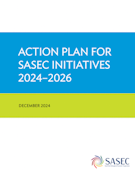 Action Plan For SASEC Initiatives (2024–2026)The Action Plan For SASEC Initiatives (APSI) (2024–2026) was finalized following extensive discussions during the SASEC working group meetings on transport, trade facilitation, and energy, as well as the Senior Officials Meeting held in New Delhi, India in late 2023, with additional input from country consultations and SASEC meetings in Thimphu, Bhutan in 2024. A significant enhancement to this iteration is the introduction of a Progress Update Framework, through which ADB will provide periodic updates on the advancement of APSI projects and knowledge initiatives. The comprehensive list of projects and knowledge works scheduled for implementation during the 2024–2026 period emerged from these SASEC deliberations and subsequent consultations, receiving final endorsement at the SASEC meetings in Thimphu, Bhutan in November 2024. For reporting purposes and to demonstrate continuity, the APSI also incorporates a list of projects and knowledge works completed during the 2022–2024 period, highlighting their connections to initiatives planned for 2024–2026. Author: SASEC Year: 2024 Download Tags: SASEC, Energy, Economic Corridor, Trade Facilitation, Transport Asian Economic Integration Report 2024This report looks at how economic factors affect the movement of goods, people, and services across borders. As regional economies work to improve economic cooperation, initiatives such as the South Asia Subregional Economic Cooperation (SASEC) strive to improve cross-border trade and connectivity through such projects as the SASEC Chittagong–Cox’s Bazar Railway Project in Bangladesh and the SASEC Highway Enhancement Project in Nepal, and the Visakhapatnam–Chennai Industrial Corridor Development Program in India. Author: Asian Development Bank Year: 2024 Download Tags: SASEC, Transport, Economic Corridor Development, Bangladesh, India, ADB Financing Transport Connectivity in the BIMSTEC RegionFinancing Transport Connectivity in the BIMSTEC Region looks at how to finance an overhaul of transport infrastructure in the Bay of Bengal Initiative for Multi-Sectoral Technical and Economic Cooperation (BIMSTEC) subregion. The report identifies institutional gaps in the BiMSTEC regional institutions compared with regional institutions in the European Commission, Association of Southeast Asian Nations, and the South Asia Subregional Economic Cooperation (SASEC) partnership. Author: Asian Development Bank Year: 2023 Download Tags: ADB, South Asia, Transport, Regional Cooperation Identifying Challenges and Improving Trade Facilitation in the States of Northeast IndiaThe northeast of India is shares international borders with Bangladesh, Bhutan, Nepal, and Myanmar and acts as a bridge for India's participation in global forums through the Bay of Bengal Initiative for Multisectoral Technical and Economic Cooperation and the South Asia Subregional Economic Cooperation program. This paper highlights challenges in global trade and suggests ways for improving trade with other countries in South Asia and Southeast Asia. Author: Sanchita Basu Das and Soumya Chattopadhyay Year: 2023 Download Tags: India, Trade Facilitation, SASEC, BIMSTEC, Transport, Bangladesh, Bhutan, Nepal, Myanmar Review of Maritime Transport 2022Ships carry over 80% of the volume of global trade. In South Asia, intraregional shipping connections increased as India improved its shipping connections to Pakistan, Sri Lanka, People's Republic of China, the Republic of Korea, Malaysia, Saudi Arabia, Singapore, and the United Arab Emirates. The most connected port in South Asia is the Colombo port in Sri Lanka; the Colombo port ranked the 24th best port in the world in 2021. Author: United Nations Conference on Trade and Development Year: 2022 Download Tags: India, Sri Lanka, Transport, Trade, Global Value Chains Significance of Padma Bridge in South Asia's ConnectivityThe Padma Bridge will improve connectivity and increase trade in the Bangladesh. The bridge increases connectivity in Bangladesh and is projected to improve the quality of life among nearby communities. The economies of nearby countries also stand to benefit, as the bridge improves connectivity among Bhutan, India, and Nepal, and improves mobility of people, goods, and essential services. Author: CUTS International Year: 2022 Download Tags: Transport, Trade, BBIN, Bangladesh, Bhutan, India, Nepal National Single Window: Guidance NoteElectronic national single window systems help stakeholders meet trade and transit requirements. Single windows allow trade and transit sectors to send information to multiple agencies through one platform, thereby helping reduce processing time and the cost of doing business. This guidance note compiles information on planning and implementing national single window systems that help countries comply with international trade regulations. Author: Asian Development Bank Year: 2022 Download Tags: ADB, National Single Window, Trade, Transport Field Diary Phuentsholing: Largest Commercial Hub in BhutanThis study assesses infrastructure and trade logistics in Phuentsholing, Bhutan. It observed that several South Asia Subregional Economic Cooperation (SASEC) projects have helped develop trade and transport in Phuentsholing through the construction of four-lane roads and bridges. The study proposes ways to promote multimodal connectivity among the BBIN countries (Bangladesh, Bhutan, India, and Nepal), such as the further improvement of ports and related facilities in Phuentsholing to handle an increase in trade and transport. Author: CUTS International Year: 2021 Download Tags: Bhutan, SASEC, Trade, Transport, BBIN Quarterly Dossier: Catalytic Multi-modal Connectivity Initiatives in the BBIN Sub-regionVarious national, bilateral, trilateral, and subregional initiatives in multimodal connectivity in the Bangladesh-Bhutan-India-Nepal (BBIN) subregion support faster and safer trade and transport. These have multiple positive impacts, including those that improve delivery of services to deal with the coronavirus pandemic. This publication presents four stories that show the impact of infrastructure connectivity in BBIN countries. It provides an assessment of connectivity initiatives as well as suggestions to enhance the positive effects of these initiatives. Author: CUTS International Year: 2021 Download Tags: ADB, BBIN, COVID-19, Trade, Transport ADB Annual Report 2020The Asian Development Bank (ADB) 2020 Annual Report details operational and financial results. In 2020, ADB continued its support for the South Asia Subregional Economic Cooperation (SASEC) road corridor in Dhaka-Northwest in Bangladesh, committing $406.1 million in loans to strengthen trade. Under the SASEC program, ADB committed $200 million to support cross-border power trade by upgrading substations in Nepal in Khimti, Barhabise, and Lapsiphedi. ADB also committed a $150 million concessional loan to improve the safety and capacity of Tribhuvan International Airport and Gautam Buddha Airport to help revive Nepal's tourism industry and address the long-term economic effects of the coronavirus pandemic. Author: Asian Development Bank Year: 2021 Download Tags: COVID-19, Energy, Regional Cooperation, SASEC, Trade, Transport Harnessing Inland Waterways for Inclusive Trade Among Bay of Bengal CountriesThe transboundary rivers Ganges, Brahmaputra, and Meghna create a vibrant water grid connecting Bangladesh, Bhutan, India, and Nepal. India has been developing fairways and river and multimodal terminals in the last few years. Further development of inland waterways in Bay of Bengal countries would create jobs and open opportunities for inclusive trade. Author: Veena Vidyadharan Year: 2021 Download Tags: Bangladesh, Bhutan, India, Inland Waterways, Nepal, Trade, Transport Learning from CAREC Corridors and Connectivity: Prospects for BBIN Sub-regionThis publication looks at Central Asia Regional Economic Cooperation (CAREC) corridors, drawing lessons for the Bangladesh, Bhutan, India, Nepal (BBIN) subregion. It also looks at the potential for multimodal connectivity between CAREC and BBIN countries. BBIN countries formed the South Asian Growth Quadrangle in 1996 and, with help from the Asian Development Bank, formed the South Asia Subregional Economic Cooperation (SASEC) program in 2001 to promote regional cooperation in transport and trade. The SASEC partnership later grew to include Maldives, Sri Lanka, and Myanmar. Author: CUTS International Year: 2021 Download Tags: BBIN, Connectivity, Economic Corridor Development, SASEC, Regional Connectivity, Trade Facilitation, Transport Regional Cooperation for Trade and Transport Connectivity in the Age of Pandemics in Asia and the PacificGovernments, border agencies, logistics companies, and traders have been studying how trade and transport facilitation measures may be used to maintain the flow of goods across borders. In South Asia, the South Asia Subregional Economic Cooperation (SASEC) Trade Facilitation Working Group and the SASEC Customs Subgroup, through SASEC’s Trade Facilitation Strategic Framework, have helped develop separate lanes for handling and releasing medicines and other critical goods. A SASEC technical assistance project is also being implemented to modernize cross-border e-commerce for micro, small and medium enterprises. Author: United Nations Economic and Social Commission for Asia and the Pacific Year: 2021 Download Tags: Trade, Transport, SASEC, Trade Facilitation Asian Economic Integration Report 2021: Making Digital Platforms Work for Asia and the PacificThis report reviews economic cooperation and integration in Asia and the Pacific. As of the end of 2019, ADB had committed a total of $13.77 billion to 60 projects under the South Asia Subregional Economic Cooperation (SASEC) partnership, including projects for improving transport connectivity, trade facilitation, and power transmission. In 2019, SASEC members revamped the SASEC Operational Plan 2016–2025 to prioritize narrowing gaps in the subregion’s transport and energy networks. The SASEC program focused on expanding multimodal connectivity to include maritime and inland water transport. Subregional health cooperation was strengthened in 2020 to improve access to health services in Asia and the Pacific. Author: Asian Development Bank Year: 2021 Download Tags: ADB, Regional Cooperation, SASEC, Transport, Trade Facilitation, Energy COVID-19 and Transport in Asia and the Pacific: Guidance NoteThis guidance note outlines the effects of the coronavirus disease pandemic on the transport sector in developing Asia and the Pacific. In India, for example, rail freight traffic in April and May 2020 had decreased by 28% compared with demand in 2019. The publication shares possible measure for a post-pandemic recovery that provides greener and more resilient recovery. The publication also proposes regional cooperation bodies for coordinating cross-border freight and logistics and international air travel. Author: Asian Development Bank Year: 2020 Download Tags: ADB, Regional Cooperation, India, Transport, Logistics, ADB RCI Digitalizing the Port Call ProcessThis study looks at the digitization of port call operations and the tensions and opportunities this digitization creates in the global maritime sector. One of the solutions being used to improve coordination of port call operations is Port Collaborative Decision Making (PortCDM), an international, independent system for near real-time digital data sharing. PortCDN technical guidelines, which can be adapted to regional and local needs, make processes more efficient by furnishing predictable port call timings and operations. Author: United Nations Conference on Trade and Development Year: 2020 Download Tags: Trade Facilitation, Transport Role of Multi-modal Connectivity in Fostering Value Chains in the BBIN Sub-regionThis report looks at how multimodal connectivity can strengthen regional value chains in the Bangladesh, Bhutan, India, Nepal (BBIN) subregion. It also provides a snapshot of various multimodal connectivity initiatives, such as the South Asia Subregional Economic Cooperation (SASEC) Road Connectivity Investment Program, the inland waterways agreement between Bhutan and Bangladesh, and the railway link between Raxaul (India) and Sirsiya (Nepal). Author: CUTS International Year: 2020 Download Tags: Bangladesh, Bhutan, India, Nepal, Rail, Road, Transport, SASEC Accelerating Regional Cooperation and Integration in Asia and the Pacific: 2017 Conference HighlightsRegional cooperation and integration (RCI) plays a critical role in accelerating economic growth, reducing poverty and economic disparity, and raising productivity and employment. This conference report looks at challenges for accelerating RCI in Asia and the Pacific, with a focus on economic corridors and emerging RCI initiatives. It underscores the importance of gateway ports to multimodal transport, such as the Port of Chittagong in Bangladesh under the South Asia Subregional Economic Cooperation (SASEC) program. The report also maintains that RCI technical secretariats, such as that for the SASEC partnership, are vital to fostering RCI across Asia and the Pacific. Author: Asian Development Bank Year: 2019 Download Tags: ADB, Economic Corridor Development, Regional Cooperation, Trade, Transport, SASEC International Rules and e-Commerce: Trade Insight, Vol. 15 No. 1–2, 2019Trade Insight is published by the South Asia Watch on Trade, Economics and Environment. This issue includes discussions on various aspects of e-commerce, such as cryptocurrencies, integration of small and medium enterprises, and competition and regulation. Its editorial argues that South Asia should take an active part in drafting global rules on e-commerce. The issue also includes features on the South Asian Association for Regional Cooperation investment agreement, Connectivity 2.0 for the South Asia Economic Union, the use of inland waterways, and the electronic cargo tracking system. Author: South Asia Watch on Trade, Economics and Environment Year: 2019 Download Tags: Electronic Cargo Tracking System, SAARC, Trade, Transport Bridging the East: Trade and Transport Connectivity in the Bay of Bengal RegionBangladesh, Bhutan, India, and Nepal Motor Vehicles Agreement aims to reap the trade and economic potentials of the countries of South Asia. This study identifies hurdles to the successful implementation of the agreement through evidence-based advocacy and dialogue. The study highlights issues related to infrastructure, political economy, gender, and livelihood. Author: CUTS International Year: 2019 Download Tags: Trade, Transport, BBIN, BBIN Motor Vehicles Agreement, Bangladesh, India, Bhutan, Myanmar, Nepal 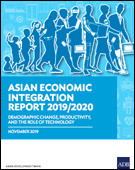 Asian Economic Integration Report 2019/2020: Demographic Change, Productivity, and the Role of TechnologyThis report reviews economic cooperation and integration in Asia and the Pacific. It reports that in 2018, the South Asia Subregional Economic Cooperation (SASEC) focused on reducing gaps in multimodal connectivity among its member countries. By the end of 2018, 52 ADB-financed projects worth $11.36 billion had been committed to SASEC projects, with an additional $106.44 million in 81 technical assistance grants. SASEC nodal officials and working groups met in Singapore in March 2018 to update the SASEC operational plan. The operational plan identified 77 projects ($45.6 billion) to be financed by SASEC members, ADB, and development partners. A holistic approach under the operational plan will build transport links with Southeast Asia and East Asia and expand regional trade markets. Author: Asian Development Bank Year: 2019 Download Tags: ADB, Regional Cooperation, SASEC, Trade Facilitation, Transport, Bangladesh, Bhutan, India, Maldives, Myanmar, Nepal, Sri Lanka Maritime Cooperation in SASEC: South Asia Subregional Economic CooperationMost South Asia Subregional Economic Cooperation (SASEC) countries rely on maritime transport for international trade. Stronger maritime relations are crucial to achieve the economic growth potential for the subregion. This report looks at how countries can strengthen international trade by improving maritime cooperation among the SASEC countries, comprised of Bangladesh, Bhutan, India, Maldives, Myanmar, Nepal, and Sri Lanka. It gives an overview of the SASEC maritime sector and identifies collaboration initiatives that could address key challenges. Author: Asian Development Bank Year: 2019 Download Tags: Transport, Trade Facilitation, Bangladesh, Bhutan, India, Maldives, Myanmar, Nepal, Sri Lanka, ADB RCI Connecting Corridors beyond Borders: Enabling Seamless Connectivity in the BBIN Subregion Trade connectivity is expected to bring economic growth and prosperity and reduce poverty in Bangladesh, Bhutan, India, and Nepal (BBIN). It will strengthen the economies of landlocked Bhutan and Nepal and give BBIN countries greater access to global markets for exports and imports. The Motor Vehicles Agreement will promote containerization of multimodal cargo movement, which will help reduce trade costs. This study identifies eight trade corridors in the BBIN countries and provides details on existing infrastructure, time-cost-distance analysis, and projected sociopolitical impact. Author: CUTS International Year: 2019 Download Tags: BBIN, BBIN Motor Vehicles Agreement, Transport, Bangladesh, Bhutan, India, Nepal 2018 Development Effectiveness ReviewThis report looks at the Asian Development Bank’s (ADB) performance in achieving the goals set out in ADB’s Strategy 2020. In its South Asia operations, ADB supported the linking of countries through transport connectivity. ADB has committed $180 million to rehabilitate the Kanchanpur–Kamala section of the East–West Highway in Nepal to promote safety and transport connectivity. It is also committed to a $150 million project through the South Asia Subregional Economic Cooperation Road Connectivity Investment Program to upgrade a section of the Asian Highway connecting Manipur, India, to Myanmar and construct an international bridge between India and Nepal. Author: Asian Development Bank Year: 2019 Download Tags: ADB, India, Jobs, Myanmar, Nepal, SASEC, Transport, Road Impact Evaluation of Transport Interventions: A Review of the EvidenceDevelopment of transport is integral to the development of economic corridors, regional economic integration, and trade. This publication reviews the impact of 91 transport interventions in developing countries, including Bangladesh, Bhutan, India, and Nepal. It summarizes the project outcomes, identifies evidence gaps, and presents proposals for future directions. Author: David A. Raitzer, Nina Blöndal, and Jasmin Sibal Year: 2019 Download Tags: Bangladesh, Regional Connectivity, Bhutan, India, Nepal, Rail, Road, Transport SASEC Vision – MyanmarMyanmar serves as a land bridge between South Asia, Southeast Asia, and East Asia. This book identifies regional and subregional opportunities for Myanmar to harness natural and human resources, industrial potential, and infrastructure connectivity as part of the South Asia Subregional Economic Cooperation (SASEC) program. SASEC Vision – Myanmar serves to supplement the 2017 SASEC Vision document, which articulates shared aspirations of the SASEC countries and sets the path to achieve these through regional collaboration. Author: South Asia Subregional Economic Cooperation Program Year: 2019 Download Tags: SASEC, Trade Facilitation, Transport, Energy Review of Maritime Transport 2018Around 80% of volume of global trade are carried by sea and are handled by ports. According to this report, global maritime trade experienced its fastest growth in five years. Prospects for maritime trade are bright. However risks exist in the form of trade frictions, the global energy transition, etc. The report states that technological advances including artificial intelligence, blockchain applications, the internet of things, and autonomous ships and drones could potentially boost efficiency in global shipping. Author: United Nations Conference on Trade and Development Year: 2018 Download Tags: Cooperation, South Asia, Transport Sustaining Harbor Operation and Maintenance in MaldivesImproved inter-island connectivity plays a key role to achieving inclusive growth in Maldives. This Asian Development Bank brief explores investments in harbor infrastructure, operation, and maintenance in Maldives, and looks to understand the opportunities these provide, especially for women, and for poor and vulnerable groups in the country. Author: Andri Heriawan Year: 2018 Download Tags: ADB, Maldives, Transport 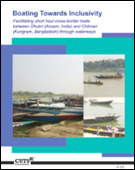 Boating Towards Inclusivity: Facilitating Short Haul Cross-border Trade between Dhubri (Assam, India) and Chilmari (Kurigram, Bangladesh) through WaterwaysIndia and Bangladesh use inland waterways to trade goods, mainly through three routes. The most active route is a portion of Protocol Route 1 between Kolkata, India, and Narayanganj, Bangladesh. This paper by Consumer Unity and Trust Society (CUTS) International explores how cross-border trade may be expanded along the stretch between Dhubri, India, and Chilmari, Bangladesh. Opening the route to small mechanized boats would offer livelihood opportunities to boat pilots, boat builders, vendors, small traders. Farmers will also have access to new markets across the border. The study highlights the need for an inclusive developmental approach that encourages cooperation in trade and connectivity and benefits marginalized communities. Author: Saurabh Kumar, Susan Mathew, and Veena Vidyadharan Year: 2018 Download Tags: Transport, India, Bangladesh, Trade, Connectivity Infrastructure Financing in South AsiaSouth Asia is the world's fastest-growing region. The region has also shown significant reduction in poverty and income inequality owing to improved road transport, electricity, and sanitation. The growth is attributed partly to the improvement in infrastructure in Bangladesh, India, and Sri Lanka. Yet, to sustain growth and deal with climate change, the region must invest more to develop infrastructure in the next 15 years. This paper looks at public and private sector financing of infrastructure and discusses the factors driving infrastructure investment. Author: Shikha Jha and Rosa Mia Arao Year: 2018 Download Tags: Bangladesh, India, Sri Lanka, Energy, ICT, Infrastructure, Public Private Partnerships, Transport Key Indicators for Asia and the Pacific 2018This report presents the latest economic, financial, social, and environmental statistics for the 48 regional members of the Asian Development Bank (ADB). In 2017, foreign direct investment flows to developing Asia was stable, with 8.8% going to South Asia; energy gains were made in five of six countries in South Asia; and starting a business continues become easier in most developing ADB member economies following lowered regulatory costs and simplified compliance procedures. Nepal and Armenia experienced the most rapid annual growth rate at 7.5%, while India witnessed a 6.7% growth in GDP. Author: Asian Development Bank Year: 2018 Download Tags: ADB, Energy, Transport, Bangladesh, Bhutan, India, Maldives, Nepal, Southeast Asia, Sri Lanka The WEB of Transport Corridors in South AsiaThis book looks at how the economic benefits of investments in transport corridors could be amplified and how negative impacts could be minimized in South Asia. The book introduces an appraisal methodology that looks at the web of interconnected elements around corridors and assesses proposed corridors according to their potential to bring wider economic benefits (WEB). It uses case studies of past and recent corridor initiatives, and presents a simulation of the impact of the proposed Kolkata-Dhaka corridor. Author: Asian Development Bank, JICA, UKAID, World Bank Year: 2018 Download Tags: ADB, Economic Corridor Development, Gender, Regional Integration, Roads, Trade, Transport, WB, ADB RCI High-Speed Railway, Market Access, and Economic GrowthHigh-speed railway in the People’s Republic of China exerts positive impact effects on growth, where a 1% increase in market access leads to an increase of 0.12% in real income. Drawing insights from the effects of transport infrastructure in India, this paper suggests that high-speed railway could help promote regional cooperation and stimulate regional economic growth. Author: Wei Zou, Liangheng Chen, and Junke Xiong Year: 2018 Download Tags: ADB, Regional Cooperation, Transport, Railway 2017 Development Effectiveness ReviewThis report serves as the Asian Development Bank’s (ADB) tool for monitoring and strengthening its progress. In South Asia, ADB’s $1.3 billion commitment to regional cooperation and integration (RCI) were spread across South Asia Subregional Economic Cooperation (SASEC) program’s priority areas: transport, energy, trade facilitation, and economic corridor development. Project preparation work will expand the $5 billion pipeline for RCI in the subregion with 26 projects planned for approval. SASEC finance ministers endorsed a joint vision of regional cooperation and connectivity. Myanmar’s addition to SASEC improved cooperation prospects between South and Southeast Asian subregions. Author: Asian Development Bank Year: 2018 Download Tags: ADB, Myanmar, SASEC, Transport, Economic Corridor Development Trade Costs, Time, and Supply Chain ReliabilityTrade Costs, Time, and Supply Chain Reliability analyzes the effect of time on trade costs using shipment-level data from the Universal Postal Union. Distance and logistics performance are factors that affect transport times and uncertainty, which increase trade costs substantially. The paper suggests that by investing in improving connectivity, South Asia Subregional Economic Cooperation countries could reduce transport times and increase reliability to major markets. Author: Utsav Kumar, Ben Shepherd, and Roselle Dime Year: 2018 Download Tags: ADB, SASEC, Trade, Transport, ADB RCI Transport Corridors and their Wider Economic Benefits: A Critical Review of the LiteratureThis paper reviews literature estimating the impact of large transport investments. It reviews 78 studies, 11 of which centers on infrastructure projects in India. The paper looks at the economic benefits of transport infrastructure projects to better understand how corridors could generate wider economic benefits, with a focus on roads, rails, and waterways. The review assesses the impact of transport corridor projects on economic welfare and equity, environmental quality, and social inclusion, and suggests a need for policies and institutions that address trade-offs. Author: Mark Roberts, Martin Melecky, Theophile Bougna, and Yan Sarah Xu Year: 2018 Download Tags: Economic Corridor Development, India, Infrastructure, Investment, Railway, Roads, Transport, WB National Trade Facilitation Committees: Beyond Compliance with the WTO Trade Facilitation Agreement?This study presents analysis of 59 national trade facilitation committees from around the world, based on a survey by the United Nations Conference on Trade and Development. It outlines how countries are applying the World Trade Organization Trade Facilitation Agreement article number 23.2 relating to the formation of national committees on trade facilitation. The study includes analysis of national trade facilitation committees’ institutional frameworks, composition, gender mainstreaming policies, communications activities, and financing sources. It also gives a summary of outcomes, obstacles faced, and lessons learned by the committees. Author: United Nations Conference on Trade and Development Year: 2017 Download Tags: Sri Lanka, Trade Facilitation Agreement, Transport, UNCTAD, WTO BIMSTEC: Rediscovering Old Routes to ConnectivityThis brief considers how Bay of Bengal Initiative for Multi-Sectoral Technical and Economic Cooperation (BIMSTEC) stands to gain by leveraging existing transport connectivity projects in the region. It looks at how initiatives, including those under the South Asia Subregional Economic Cooperation (SASEC) Program and other groups, build connectivity through standards harmonization, multimodal integration, and development of national single windows. Author: K. Yhome Year: 2017 Download Tags: BIMSTEC, Connectivity, Energy, Regional Cooperation, Single Window, Standards Harmonization, Transport 2017 Handbook of StatisticsThis report presents statistics and indicators on international trade, investment, and development. It includes data on developing economies in South Asia, which in 2016 accounted for about $401 billion in merchandise exports and $529 billion in merchandise imports, $192 billion in service exports and $175 billion service imports, and 6.7% gross domestic product (GDP) growth. Author: United Nations Conference on Trade and Development Year: 2017 Download Tags: FDI, South Asia, Trade, Transport, UNCTAD Key Indicators for Asia and the Pacific 2017This report gives the latest statistics on economic, financial, environmental, and Sustainable Development Goal (SDG) indicators for the 48 regional members of the Asian Development Bank, including up-to-date figures on energy, trade, and transport. In 2016, Asia and the Pacific accounted for 40.9% of global gross domestic product (GDP). While foreign direct investment (FDI) flows declined in East Asia and Southeast Asia in 2016, FDI flows to South Asia remained stable. The average number of days required to start a business in South Asia was 16. Energy consumption is also expected to increase in the coming decades owing to increasing GDP per capita and an increase in the use of energy-consuming goods. Author: Asian Development Bank Year: 2017 Download Tags: ADB, Energy, Transport, Bangladesh, Bhutan, India, Maldives, Nepal, Southeast Asia, Sri Lanka Asian Development Bank and Nepal: Fact SheetThe ADB Fact Sheet provides social and economic indicators on Nepal, as well as information on ADB operations in the country and contact details. Nepal is working toward graduation to middle-income country status and achieving the Sustainable Development Goals by 2030. ADB assistance aims to improve equitable access to education while pursuing a strategy that aims to address bottlenecks in infrastructure development in energy, transport, and urban facilities. ADB operations will also focus on agriculture, gender equality, good governance, environmental sustainability, regional cooperation, and private sector development. Author: Asian Development Bank Year: 2017 Download Tags: ADB, Nepal, Sustainable Development Goals, Infrastructure, Energy, Transport, Agriculture, Regional Cooperation, Gender Transport Policies and DevelopmentThis survey reviews the current state of impact assessment of transport investments and policies on growth, inclusion, and sustainability in a developing country context. It reviews the cost and benefits of transport investment and policies in developed countries and discusses challenges in implementing transport interventions in developing countries. Author: Claudia N. Berg, Uwe Deichmann, Yishen Liu, and Harris Selod Year: 2017 Download Tags: Investment, Sustainability, Transport Asian Development Bank and Bhutan: Fact SheetThe Asian Development Bank (ADB) Fact Sheet provides social and economic indicators on Bhutan, as well as information on ADB operations and contact details. Since 1982, ADB has supported Bhutan through projects in energy, finance, and trade facilitation, and transport. ADB has approved loans totaling $498.81 million, grants of $222.4 million, and $73.48 million in technical assistance for Bhutan. ADB support reflects strong emphasis on green energy production, transport connectivity, and urban infrastructure projects. To make growth more inclusive, ADB will help Bhutan through projects focusing on cross-border connectivity, skills development, and agriculture. Author: Asian Development Bank Year: 2017 Download Tags: ADB, Bhutan, Energy, Connectivity, Transport, Agriculture, Roads Asian Development Bank and Myanmar: Fact SheetUpdated yearly, this Asian Development Bank (ADB) Fact Sheet provides social and economic indicators on Myanmar, as well as information on ADB operations in the country and contact details. ADB is supporting Myanmar in promoting inclusive and sustainable economic growth, with investments focusing on infrastructure (in energy, transport, and urban and water services), education, and rural development. Regional cooperation will remain one of the key priorities. Author: Asian Development Bank Year: 2017 Download Tags: ADB, Myanmar, Sustainability, Infrastructure, Energy, Transport, Regional Cooperation Asian Development Bank and the Maldives: Fact SheetThis Asian Development Bank (ADB) Fact Sheet provides social and economic indicators on Maldives, and information on ADB operations and contact details. ADB is helping Maldives upgrade commercial and domestic harbors, ensure power supply reliability, boost economic growth, and reduce regional disparities in living standards. Projects in sustainable energy development are helping Maldives achieve carbon neutrality and reduce high fuel costs. Since 1978, ADB has approved 29 loans and grants totaling $248.53 million for Maldives, and has funded 67 technical assistance projects totaling $29.65 million. Author: Asian Development Bank Year: 2017 Download Tags: ADB, Maldives, Energy, Transport, Development, Sustainability 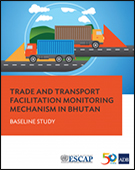 Trade and Transport Facilitation Monitoring Mechanism: Baseline Study in BhutanThis report synthesizes the business process analysis conducted on import of light motor vehicles from third countries to Bhutan via Kolkata Port, import of plastic kitchenware and tableware (melamine products) from Bangladesh to Bhutan, export of ferrosilicon from Bhutan to third countries through Kolkata Port, and export of cardamom from Bhutan to Bangladesh. It also measures the performance of trade corridors and border crossings in Bhutan, to quantify current trade and transport facilitation and provide recommendations. Findings of the study reveal bottlenecks to trade, including numerous procedures needed to complete import/export, and low speed along the trade corridors. The report includes specific short-term and long-term policies to improve Bhutan’s trade and transport facilitation. Author: Asian Development Bank and United Nations Economic and Social Commission for Asia and the Pacific Year: 2017 Download Tags: Bhutan, Trade Facilitation, Bangladesh, ADB, Transport, ADB RCI 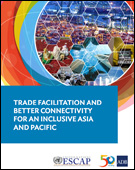 Trade Facilitation and Better Connectivity for an Inclusive Asia and PacificThis report investigates the evolution of trade costs, examines trade facilitation and paperless trade implementation, and highlights key initiatives in South Asia, including efforts by members of the South Asia Subregional Economic Cooperation (SASEC). The SASEC Trade Facilitation and Transport Working Group agreed to expand assistance to trade facilitation through technical assistance to support more efficient, transparent, secure, and service-oriented processing of cross-border trade across South Asia. Through 2025, the SASEC connectivity agenda will be better aligned with the frameworks of South Asian Association for Regional Cooperation and the Bengal Initiative for Multi-Sectoral Technical and Economic Cooperation. To help establish a trade and transport facilitation monitoring mechanism, Bangladesh, Bhutan, and Nepal conducted studies that reviewed trade and transport procedures, analyzed bottlenecks, and gave recommendations on trade and transport facilitation. Author: Asian Development Bank and United Nations Economic and Social Commission for Asia and the Pacific Year: 2017 Download Tags: ADB, Bangladesh, Bhutan, BIMSTEC, Maldives, Nepal, SAARC, India, Myanmar, SASEC, South Asia, Sri Lanka, Trade Facilitation, Transport, UNESCAP, ADB RCI Together We Deliver: 50 Stories of ADB's Partnerships in Asia and the PacificThis special edition of Together We Deliver tells 50 stories that highlight the importance of good partnerships in Asia and the Pacific in meeting complex development challenges. In South Asia, ADB has supported infrastructure development and social programs, helping lift people out of poverty in a diverse, rapidly urbanizing subregion. The South Asia Subregional Economic Cooperation Roads Improvement Project, for instance, is set to widen 160 kilometers of Nepal’s East–West Highway, which connects Nepal to India. The improved roads will provide faster and better access to social services and economic opportunities, and will facilitate national and regional integration. Author: Asian Development Bank Year: 2017 Download Tags: ADB, Economic Corridor Development, India, Nepal, Regional Integration, Roads, SASEC, South Asia, Transport 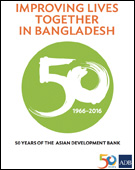 Improving Lives Together in Bangladesh: 50 Years of the Asian Development BankThis report highlights the milestones in the Bangladesh-Asian Development Bank (ADB) partnership since 1973, including projects in transport and energy that have shown sustained development results. Development contributions from ADB-assisted projects in Bangladesh include the Second South Asia Subregional Economic Cooperation Program (SASEC) Bangladesh-India Electrical Grid Interconnection Project that will help double electricity imports from India from the current 500 megawatts; the $505 million SASEC Railway Connectivity, Akhaura Laksam Double-Track Project, which will help railways meet passenger and freight demand; the SASEC Road Connectivity Project, which is upgrading a 70 km stretch along a corridor connecting the northwest to Dhaka to support domestic and subregional trade; and the SASEC Trade Facilitation Program, which aims to reduce non-tariff barriers by adopting international Customs administration protocols, upgrade existing Customs management systems, and establish a web-based electronic trade portal. Author: Asian Development Bank Year: 2017 Download Tags: SASEC, ADB, Bangladesh, India, Railway, Energy, Transport Trade and Transport Facilitation Monitoring Mechanism: Baseline Study in BangladeshThis report synthesizes the business process analysis conducted on the export of plastic kitchenware and tableware from Bangladesh to Bhutan through Burimari land port, and the import of lentils from Nepal to Bangladesh through Banglabandha land port, as well as studies on trade corridors and border crossings in Bangladesh, to quantify current trade and transport facilitation in Bangladesh through a set of indicators. Findings of the study reveal bottlenecks to trade, including costly one-time procedures for a new trader, numerous documents and copies required to complete export and import processes, and low speed along the trade corridors. This report includes specific short-term and long-term policies to improve Bangladesh’s trade and transport facilitation. Author: Asian Development Bank Year: 2017 Download Tags: Trade Facilitation, Transport, Bhutan, Bangladesh, Nepal, SASEC, ADB RCI 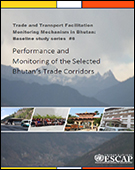 Performance and Monitoring of Selected Bhutan’s Trade CorridorsThis report on performance and monitoring of two corridors, the Kolkata-Phuentsholing corridor and the Burimari-Phuentsholing corridor is the sixth of a six-part study on Trade and Transport Facilitation Monitoring Mechanism (TTFMM) in Bhutan. The study finds that average speed along the corridor is very low. Along the Kolkata-Phuentsholing corridor, average speed with delays is 9 kilometers per hour (km/h) and without delays is 15 km/h. Along the Burimari-Phuentsholing corridor, average speed with delays is about 5 km/h and without delays is 16 km/h. The challenges to ensuring efficient transport along the corridor remain significant, yet the study sees tremendous opportunities for improvement, and raises the importance of continuous and effective monitoring to observe whether trade and transport performance along the corridor improve over time. Author: United Nations Economic and Social Commission for Asia and the Pacific Year: 2017 Download Tags: UNESCAP, Bhutan, Trade Facilitation, Transport Business Process Analysis of Export of Ferro Silicon from Bhutan to the Third CountriesThis business process analysis report on the export of Cardamom from Bhutan to Bangladesh via Phuentsholing-Jaigaon-Changrabandha-Burimari is the fourth of a six-part study on Trade and Transport Facilitation Monitoring Mechanism (TTFMM) in Bhutan. According to the study, it takes 29 days to complete all export procedures for new traders. The process is reduced to 26.5 days without the first time procedures. Total cost to export a typical truckload of two metric tons of cardamom is around $654, with one-time procedures amounting around $308. 24 documents are needed to complete the export process, with some documents requiring extra copies, numbering to as much as 71. Specific recommendations are given to improve trade in this commodity. Author: United Nations Economic and Social Commission for Asia and the Pacific Year: 2017 Download Tags: Bangladesh, Bhutan, Trade Facilitation, Transport Business Process Analysis of Import of Light Motor Vehicles from the Third Countries to Bhutan via Kolkata PortThis business process analysis report on the import of light motor vehicles (LMVs) from third countries to Bhutan via Kolkata Port is the first report of a series of a six-part study on Trade and Transport Facilitation Monitoring Mechanism (TTFMM) in Bhutan. Study findings reveal it takes 28.5 days to import LMVs from the Republic of Korea, with costs amounting to around $1,289 to complete the import procedures, not including the applicable duty and taxes payable in Bhutan. 39 documents are needed to complete the import process, with 12 documents requiring extra copies. Specific recommendations are given to improve trade in this commodity. Author: United Nations Economic and Social Commission for Asia and the Pacific Year: 2017 Download Tags: UNESCAP, Bhutan, Trade Facilitation, Transport Lessons from ADB Transport Projects: Moving Goods, Connecting People, and Disseminating KnowledgeThis publication shares 20 case stories from the Asian Development Bank bearing practical lessons for transport projects across Asia and the Pacific region under different socioeconomic and political situations. The book includes reports on improving aviation in Bhutan, working on computerized transport and trade logistics in Nepal, and constructing Sri Lanka's Greenfield Highway, and the role policy plays in those projects. It also draws lessons from how India's road development increased rural communities' access to public services and economic opportunities, and how participatory processes in selecting road improvement projects in Bangladesh provide a model for long-term plan for road maintenance. Author: Asian Development Bank Year: 2017 Download Tags: ADB, Bangladesh, Bhutan, India, Nepal, Railway, Sri Lanka, Transport, ADB RCI Climbing Higher: toward a Middle-income NepalNepal is experiencing modest growth but brisk poverty reduction. It has halved the poverty rate in just seven years and witnessed an equally significant decline in income inequality. Yet Nepal remains one of the poorest and slowest-growing economies in Asia, with per capita income falling behind its regional neighbors. The report discusses the need for comprehensive policy reform to address the country’s challenges in becoming a lower-middle-income country by 2030. The report outlines suggested reforms to facilitate greater investment and improved productivity, build new sources of growth, and deepen human capital. Author: World Bank Group Year: 2017 Download Tags: Employment, Investment, Nepal, Poverty Reduction, Trade, Transport, WB 2016 Development Effectiveness ReviewThe Development Effectiveness Review tracks development progress in Asia and the Pacific and monitors the Asian Development Bank’s (ADB) effectiveness 2010-2016. For South Asia, ADB shares results in regional cooperation, energy, and road and rail transport. ADB also approved $4.4 billion in financing for projects in South Asia during 2016. The Review includes details of ongoing and newly approved projects. Author: Asian Development Bank Year: 2017 Download Tags: ADB, Asia-Pacific, Development, Poverty Reduction, Regional Cooperation, Regional Integration, Roads, Transport, Bangladesh, Bhutan, India, Maldives, Nepal, Sri Lanka Basic Statistics 2017Basic Statistics 2017 contains development indicators for 45 economies in the Asia and Pacific Region, including the seven SASEC countries, Bangladesh, Bhutan, India, Maldives, Myanmar, Nepal, and Sri Lanka. It includes selected indicators of the Sustainable Development Goals (SDGs) such as the proportion of population living below $1.90 (PPP) a day, proportion of population with access to electricity, renewable energy share in the total final energy consumption, unemployment rate, total official flows for infrastructure, and trade balance. Author: Asian Development Bank Year: 2017 Download Tags: Energy, Trade Facilitation, Transport, Sustainable Development Goals, Bangladesh, Bhutan, India, Maldives, Myanmar, Nepal, Sri Lanka SASEC Powering Asia in the 21st Century SASEC Powering Asia in the 21st Century defines the SASEC Vision, framing the SASEC partnership in the larger context of the subregion’s collective growth and development by articulating shared aspirations of the SASEC countries (Bangladesh, Bhutan, India, Maldives, Myanmar, Nepal, and Sri Lanka), and setting the path to achieve these through regional collaboration. The SASEC Vision lays out a subregional transformative opportunity by leveraging natural resources, promoting industry linkages for the development of regional value chains, and expanding the region’s trade and commerce through the development of subregional gateways and hubs. This document is supplemented by SASEC Vision – Myanmar. Author: South Asia Subregional Economic Cooperation Year: 2017 Download Tags: SASEC, Trade Facilitation, Transport, Energy, ADB RCI Facilitate Trade for Development: Aid for Trade The Aid for Trade program has been providing support to developing economies in tackling obstacles to growth through better facilitation of trade in the last 10 years. Since its launch in 2006, a total of $308 billion has been disbursed to finance aid-for-trade programs and projects, which are working to reduce trade and transport costs, promote trade expansion, and achieve economic and social objectives. As high trade costs persist in keeping developing countries from fully exploiting their trade and development potential, the Aid for Trade program remains highly relevant, and will help developing economies, including landlocked and small and vulnerable economies, achieve the 2030 Agenda for Sustainable Development. Author: William Hynes and Frans Lammersen Year: 2017 Download Tags: Trade, Development, Aid for Trade, Trade Facilitation, Transport, Bangladesh, Bhutan, Myanmar, Nepal, Least Developed Countries  Development of East Coast Economic Corridor and Vizag-Chennai Industrial CorridorThe East Coast Economic Corridor (ECEC)—India’s first coastal corridor—is an integrated economic development initiative that is expected to help pursue industrialization and integrate domestic companies into the global value chains of Southeast Asia and East Asia. Its development will start with Vizag–Chennai Industrial Corridor (VCIC), which covers about 800 kilometers and includes several ports and major industrial centers. This paper discusses strategies to consider when trying to improve shipping and air connectivity in the ECEC and Vizag–Chennai Industrial Corridor (VCIC). It stresses the importance of infrastructure development and regulatory reforms that facilitate increased connectivity. Author: Pritam Banerjee Year: 2017 Download Tags: Bangladesh, Connectivity, Economic Corridor, India, Infrastructure, Regional Integration, Trade Facilitation, Transport, Development, Economic Corridor Development, ADB RCI 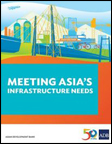 Meeting Asia's Infrastructure NeedsThis report estimates infrastructure investment needs in Asia and the Pacific for 2016-2030, updating the Asian Development Bank's assessment for 2010-2020 published in 2009. The report places developing Asia's investment needs at $26 trillion to maintain its growth momentum, eradicate poverty, and respond to climate change. While developing Asia's infrastructure, including its transport network and electricity generation capacity, has improved significantly over the years, it remains far from adequate – lack of reliable power supply continues to constrain economic growth and traffic congestion results in lost productivity, wasted fuel, and human stress. The report recommends $14.7 trillion investment for power and $8.4 trillion for transport. South Asia requires investments valued at 8.8% of gross domestic product. Author: Asian Development Bank Year: 2017 Download Tags: Asia, South Asia, Energy, Transport, Bangladesh, Bhutan, ADB, India, Maldives, Myanmar, Sri Lanka, Nepal Time, Uncertainty, and Trade FlowsThis paper assesses the impact of international transit time and time-related uncertainty on bilateral trade, including their impact on trade costs. It concludes that international transit time matters primarily for South-South trade, while uncertainty is more important for North-North trade. Both factors are confirmed to be statistically and economically significant determinants of bilateral trade, including global value chains, and strengthens the ground on the emerging policy emphasis to address the overall costs faced by supply chain operators, including costs linked to uncertainty. Author: Jose Anson, Jean-Francois Arvis, Mauro Boffa, Matthias Helble, and Benjamin Shepherd Year: 2017 Download Tags: Trade, Trade Facilitation, Transport, South-South Trade Accumulating Trade Costs and Competitiveness in Global Value ChainsThis paper examines the implications of trade costs, including applied tariffs, transportation and insurance costs, on competitiveness at industry, national and global levels, and identifies where trade facilitation investment would have the highest social returns from the perspective of global value chains (GVCs). With trade costs amplified along GVCs, profitability of individual business operations are affected by incurred transaction expenses. The authors conclude that direct benefits of trade facilitation will be higher for countries that are not yet well integrated into international trade, but key traders who are at the core of GVCs also stand to gain much. Author: Antonia Diakantoni, Hubert Escaith, Michael Roberts and Thomas Verbeet Year: 2017 Download Tags: Trade, Tariff, Transport, Trade Facilitation, Global Value Chains Doing Business 2017: Equal Opportunity for AllGovernments including that of India have relied on Doing Business to provide insights into good practices worldwide. Doing Business 2017: Equal Opportunity for All presents quantitative indicators on business regulations that can be compared across 190 economies. It shows how South Asia can work to improve certain areas, including removing restrictions on women’s right to work. It also shows how South Asia has been the most successful region in terms of trading across borders. Bhutan, with a global ranking of 73, ranks highest among South Asian countries. Author: World Bank Group Year: 2017 Download Tags: Trade Facilitation, Ease of Doing Business, Transport, WB 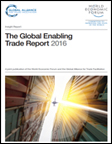 Global Enabling Trade Report 2016The Global Enabling Trade Report has been created to provide insight into trade policy and practice. It includes the Enabling Trade Index (ETI), which assesses the extent to which economies have in place institutions, policies, infrastructures and services facilitating the free flow of goods over borders and to their destination. This edition highlights that while an increasingly globalized trading system has been lifting millions out of poverty, trade barriers and costs are still preventing millions of people around the world from engaging in international trade. It reports that all South Asian economies have improved their ETI score over the past two years, with Bhutan as the most improved country in the region, jumping 12 places to 92, followed by India at 102, Sri Lanka at 103, Nepal at 108, Pakistan at 122, and Bangladesh at 123, yet the region remains the most closed worldwide. While South Asia has improved its access to foreign markets and adoption of ICTs, it needs to improve access to its domestic market – on average, South Asian countries impose a tariff of 16.7% on imported products – and enhance its transport infrastructure, particularly in Bhutan and Nepal. Author: Global Alliance for Trade Facilitation and the World Economic Forum Year: 2016 Download Tags: Trade, Trade Facilitation, Transport, Trade Policy, World Economic Forum, Bangladesh, Bhutan, India, Sri Lanka, Pakistan Connecting Bangladesh: Economic Corridor NetworkEconomic corridors anchored on transport connectivity could significantly boost Bangladesh's economic growth. This paper presents a new set of corridors for Bangladesh – a nine-corridor comprehensive integrated multimodal economic corridor network that will enhance Bangladesh’s role as land bridge between South Asia and Southeast Asia, and between South Asia and northern Asia. These proposed corridors are designed to sustain robust economic growth over the long term by improving regional connectivity, transit, and integration, alongside trade facilitation measures. Author: Mohuiddin Alamgir Year: 2016 Download Tags: Economic Corridor, Bangladesh, South Asia, Southeast Asia, Connectivity, Transport, Trade Facilitation, ADB RCI 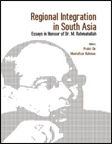 Regional Integration in South Asia: Essays in Honour of Dr. M. RahmatullahBuilding efficient transport linkages within and across countries in South Asia is crucial to development of production networks and value chains, and promotion of trade and investment. This collection of essays honors Dr. M. Rahmatullah, who championed the cause of multimodal connectivity in South Asia for seamless movement of goods across Asia, and dreamt of building an integrated South Asia through corridors and gateways to be connected with pan-Asian transport networks. A valuable resource for policymakers, academics, and practitioners working on issues of South Asian regional integration, this book looks at progress made on facilitating trade and enhancing connectivity in the region, assesses policy priorities, implementation imperatives, and emerging challenges to South Asian trade and integration, and gives recommendations on further strengthening South Asian integration. Author: Prabir De and Mustafizur Rahmant Year: 2016 Download Tags: Transport, Trade, Trade Facilitation, Connectivity, South Asia, South Asian Economic Union 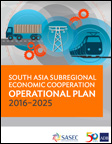 South Asia Subregional Economic Cooperation Operational Plan 2016-2025The SASEC Operational Plan 2016–2025 embodies the strategic objectives and operational priorities of the SASEC Program for the next decade. It expands the SASEC Program's focus beyond intraregional cooperation to developing links with Southeast and East Asia, thus widening the scope of transport, trade facilitation, and energy cooperation. Economic and industrial corridor development, which will arise from improved connectivity, has been introduced as a priority initiative. SASEC 2025 is supported by a list of potential projects to be implemented in the subregion during 2016-2025, that will advance the SASEC goals of multi-modal connectivity, energy security and the growth of regional energy markets, and increased intra- and inter-regional trade. An
update to the operational plan was
published in 2020. Author: Asian Development Bank Year: 2016 Download Tags: SASEC, ADB, Trade Facilitation, Economic Corridor, Transport, Myanmar ASEAN-India Air Connectivity ReportAir connectivity plays an important component in India’s connectivity agenda with the Association of Southeast Asian Nations (ASEAN). This ASEAN-India Air Connectivity Report addresses issues and challenges concerning air connectivity between India and ASEAN, including constraints and bottlenecks hindering growth of air cargo that would help unlock trade potential. With India embarking on “Make in India” and “Skill India” policies, stronger air connectivity has become all the more important in the context of India’s drive for economic integration with its neighbors in the east. Author: ASEAN-India Centre and Research and Information Centre for Developing Countries Year: 2016 Download Tags: Transport, ASEAN, India, Manufacturing 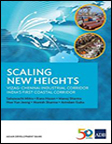 Scaling New Heights: Vizag-Chennai Industrial Corridor, India’s First Coastal CorridorThis book provides policymakers with a guide to understanding India’s economic corridor development strategy by examining its first coastal economic corridor, the East Coast Economic Corridor. It lays out the plan for its first phase, the Vizag–Chennai Industrial Corridor, which can help unify the country's domestic market, integrate its economy with Asia's global value chains, and support the 'Make in India' initiative to spur manufacturing through construction of world-class infrastructure supported by a major transport network, connecting urban clusters complemented by vibrant industrial zones, and encouraging a favorable and competitive environment for businesses to thrive, and facilitating efficient movement of goods and people. As a policy instrument and development strategy, economic corridors can help fast-track inclusive and sustainable economic growth, stimulate rapid industrialization and increase productivity, promote investments, and expand regional connectivity. Author: Sabyasachi Mitra, Rana Hasan, Manoj Sharma, Hoe Yun Jeong, Manish Sharma, and Arindam Guha Year: 2016 Download Tags: Economic Corridor, India, Trade Facilitation, Transport, Employment, Economic Corridor Development, ADB RCI 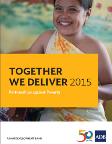 Together We Deliver 2015: Partnerships against PovertyThis book gathers 14 stories from across Asia and the Pacific that highlight successful projects demonstrating development impact, best practices, and innovation. It includes stories from Bangladesh, India, Nepal, and Sri Lanka that illustrate how the Asian Development Bank (ADB) and its partners, with their combined expertise, problem-solving abilities, and finances lift people’s living standards and solve a variety of pressing development problems. In India, Mumbai’s new Chhatrapati Shivaji International Airport is a shining example of how public–private partnerships can help solve the country's infrastructure deficit, increasing efficiency in cargo and passenger handling and saving on energy costs. In Bangladesh, partnership between ADB and nongovernment organizations is bringing health care to the urban poor. In Nepal, a Skills for Employment project is helping those caught in poverty improve their job prospects. In Sri Lanka, ADB and its development partners helped provide a fresh start through electricity, education, health services, and water sanitation.
Author: Asian Development Bank Year: 2016 Download Tags: Public Private Partnerships, Transport, Water Sanitation, Employment, Poverty Reduction ADB Annual Report 2015The Asian Development Bank's (ADB) 2015 Annual Report provides a complete picture of ADB’s performance in the reporting year. In 2015, South Asia became the fastest-growing regional economy in Asia and the Pacific, and ADB's assistance to the region approached $3.80 billion in combined loans and grants for 22 projects and $37.26 million in grants for technical assistance. Through the South Asia Subregional Economic Cooperation (SASEC) Program, ADB also continued to drive tighter integration in the region, enhancing cooperation and boosting connectivity with initiatives including helping finalize the Bangladesh-Bhutan-India-Nepal and India-Myanmar-Thailand Motor Vehicle Agreements, Bangladesh-India power grid upgradation, preparation of high-priority transport projects in Bangladesh, and analytical studies for India's East Coast Economic Corridor. Author: Asian Development Bank Year: 2016 Download Tags: ADB, SASEC, BBIN, Energy, Transport 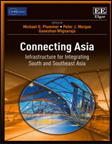 Connecting Asia: Infrastructure for Integrating South and Southeast AsiaThis book contains background papers prepared for the Asian Development Bank and the Asian Development Bank Institute joint study, 'Connecting South Asia and Southeast Asia.' It emphasizes the potential contribution to growth that greater connectivity—through better transport and energy infrastructure and improved soft infrastructure, including trade facilitation—between South Asia and Southeast Asia can foster. With benefits including greater participation in global supply chains for South Asia; lower trade costs; and increase in inter- and intraregional trade, the book underscores that, at a juncture where closer regional integration can secure sustainable and inclusive growth for economies in the two regions, specific policies should be examined and considered to enable both regions to maximize gains from greater integration. Author: Michael G. Plummer, Peter J. Morgan, Ganeshan Wignaraja, eds. Year: 2016 Download Tags: South Asia, Southeast Asia, Trade Facilitation, Transport, Energy, ADB, Economic Corridor, Bangladesh, India, Sri Lanka, ADB RCI Sri Lanka: Building on SuccessOver the years, the Asian Development Bank (ADB) and its many partners in Sri Lanka have worked together to realize the goal of changing the country’s status from low to middle income. With Sri Lanka moving toward becoming an upper middle-income country in a few years, challenges lie on the road ahead. This publication provides an overview of recent ADB support toward Sri Lanka's development in diverse areas including transport, energy and education, and discusses how the Government of Sri Lanka and ADB will transition their partnership to push the country to the next level of prosperity. Author: Asian Development Bank Year: 2015 Download Tags: Sri Lanka, Transport, Ports, Development, Economic Growth Policy Brief: A Safe Public Transportation Environment for Women and GirlsEnsuring safe public transport for women enhances inclusive growth by encouraging their participation in the public sphere, including the workforce. A range of interventions dealing with the issue of sexual harassment—which negatively impacts women's movement in public spaces, affecting their productivity—in public transportation have been adopted by governments and civil society around the world, including media campaigns, targeted mobile applications, and women-only public vehicles. This report draws on rapid assessments of sexual harassment in public transportation conducted in three countries in Asia, with recommended actions to prevent and address sexual harassment in public transportation and its related spaces, such as train platforms and bus stops. Author: Asian Development Bank Year: 2015 Download Tags: Gender, Inclusive Growth, Transport  Asian Economic Integration Report 2015: How Can Special Economic Zones Catalyze Economic Development?The 2015 Asian Economic Integration Report reviews regional economic cooperation and integration in Asia, providing updates on recent developments affecting trade policy, including the conclusion of Trans-Pacific Partnership, relatively large number of proposed FTAs--with India among the major proponents, and progress of trade facilitation in Asia through the World Trade Organization's Trade Facilitation Agreement. Trade facilitation in developing Asia has significantly advanced over the last several decades, with a total of 48,000 kilometers of regional transport corridors along major supply chains improved. From 1992 to 2014, developing Asia together with ADB and its partners have mobilized $38.4 billion for 186 regional transport and trade facilitation investment projects under three subregional programs—including the South Asia Subregional Economic Cooperation (SASEC) program. This also issue includes a special chapter highlighting how special economic zones can catalyze economic development, with the right business environment and policies in place. Author: Asian Development Bank Year: 2015 Download Tags: Special Economic Zones, Trade Facilitation, Transport 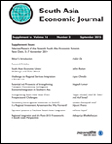 South Asia Economic Journal: Supplement Issue: Papers of the Seventh South Asia Economic SummitThis special issue of the South Asia Economic Journal contains papers presented at the 7th South Asia Economic Summit. With South Asia moving toward a South Asia Economic Union (SAEU), several major challenges remain, including reduction in the sensitive list, removal of Non-Tariff Barriers, effective and faster implementation of the South Asian Agreement on Trade in Services, effective regional investment cooperation, promotion of trade facilitation measures, promotion of regional value chains, cross-border energy cooperation. The articles in this volume tackle these critical issues to develop a way forward and generate ideas on policy priorities. A paper by Mr. Nagesh Kumar, UNESCAP-SSWA, on 'Potential and Prospects of Strengthening Transport Connectivity for Regional Economic Integration in Southern Asia' also discusses how two planned extended transport corridors can only facilitate trade and draw South Asia closer to its potential to become a hub of Asia–Europe trade. Author: Prabir De, editor Year: 2015 Download Tags: SAARC, South Asian Economic Union, Trade Facilitation, Transport 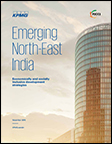 Emerging North-East India: Economically and Socially Inclusive Development StrategiesThis report highlights opportunities that can be explored in India's North East region, including tourism, energy, and infrastructure, to enable the North East to develop economically, while contributing to India's development as a whole. It takes stock of recent initiatives, including the 'Look East' Policy and the Bangladesh-Bhutan-India-Nepal (BBIN) subregional grouping, and identifies areas for improvement to propel inclusive growth. Harnessing the region's full potential would require upgrading the region's infrastructure. Significant investments are needed, since lack of connectivity and inadequate infrastructure present developmental bottlenecks, contributing to the slow pace of growth in the North East. The report presents policy recommendations and suggested actions, and a forecast for India for 2021-2022. Author: KPMG India and FICCI Year: 2015 Download Tags: India, BBIN, Connectivity, Transport, Trade Facilitation 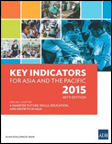 Key Indicators for Asia and the Pacific 2015The Key Indicators for Asia and the Pacific 2015 includes up-to-date available indicators for the 48 regional members of the Asian Development Bank, including numbers on energy, trade, transport, and tourism. Key trends noted in 2014 include the rising volume of intraregional exports globally, due to robust economic growth and expanding regional networks. For Asia and Pacific economies, primary source for merchandise imports was the region itself with a 49.7% share. In energy consumption, Asia and the Pacific now consumes more than 40% of the world's electricity, with the People's Republic of China and India accounting for nearly 70% of the region's output. This 46th edition of Key Indicators also includes a special chapter on skills, education, and growth in Asia, and emphasizes the need to focus on quality and ensure that the workforce has the skills to take the region through economic transition to prosperity. Author: Asian Development Bank Year: 2015 Download Tags: Economic Growth, Energy, Trade, Transport, India Regional Transport Infrastructure: Mapping Projects to Bridge South Asia and Southeast AsiaThis Asian Development Bank (ADB) brief highlights the critical role of transport infrastructure in bridging South Asia and Southeast Asia. It maps details of economic corridors and highways, railroads, and seaports, and identifies priority transport investment projects needed to link the two subregions. While an investment of $986 million in road transport and $2.3 billion in sea ports may be needed to create proper connectivity between the two regions, the study's conservative estimate of potential benefit ranges from $89 billion to $358 billion over the next decade - demonstrating how investment in infrastructure can pay huge dividends in the medium- and longterm. Author: Peter Morgan, Mike Plummer, and Ganeshan Wignaraja Year: 2015 Download Tags: Transport, South Asia, Southeast Asia, ADB RCI Bangladesh-Bhutan-India-Nepal Motor Vehicles Agreement: Unlocking the Potential for Vibrant Regional Road Freight ConnectivityThe Bangladesh-Bhutan-India-Nepal Motor Vehicles Agreement (BBIN MVA) is expected to reduce trade transaction costs and be an effective tool to realize trade and investment potential in the subregion by generating new economic opportunities, particularly in the border areas. While it has put in place a good framework for facilitating transit and transport within BBIN, gaps remain in terms of interpretation and application of various procedures, and need for further policy harmonization among the contracting parties. This discussion paper analyzes operation issues and proposes solutions for cross-border movement of vehicles and Customs procedures. Author: Pritam Banerjee Year: 2015 Download Tags: BBIN, Trade Facilitation, Transport 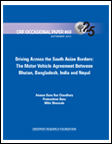 Driving Across the South Asian Borders: the Motor Vehicle Agreement between Bhutan, Bangladesh, India, and NepalThis paper discusses the benefits of strengthening physical connectivity in the Bangladesh-Bhutan-India-Nepal (BBIN) subregion through a Motor Vehicle Agreement (MVA). Through a framework that envisions transforming transport corridors into economic corridors and with its pipeline of 30 priority transport connectivity projects estimated at $8 billion, the MVA aims to increase intraregional trade in South Asia by almost 60%. This publication provides a concise background on the BBIN MVA, examining the circumstances leading to its signing, the role of the Asian Development Bank (ADB) and the ADB-supported SASEC Program initiative to enhance interconnectivity, challenges that require careful consideration, and its wider implications for the South Asian region. Author: Anasua Basu Ray Chaudhury, Pratnashree Basu, and Mihir Bhonsale Year: 2015 Download Tags: Transport, Trade Facilitation, BBIN World Trade Organization Annual Report 2015The World Trade Organization (WTO) Annual Report 2015 provides an overview of WTO activities in 2014 and early 2015. It presents a timeline of two decades of the WTO -- from its origins succeeding the General Agreement on Tariffs and Trade to its current role in the multilateral trading system. It presents a chapter on how WTO helps developing countries build trade capacity and allows them to implement trade agreements. WTO training courses are organized for officials from developing countries each year. Author: World Trade Organization Year: 2015 Download Tags: Trade, Trade Policy, WTO, Tariffs, Energy, Bangladesh, India, Nepal, Sri Lanka, Trade Facilitation, Transport, Asia, Agriculture 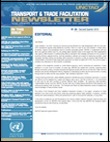 UNCTAD Transport and Trade Facilitation Newsletter No. 66 – Second Quarter 2015The Transport and Trade Facilitation Newsletter highlights trade facilitation support across countries and shares innovations from Cote d’Ivoire and Greece, including the new UNCTAD Technical Note on World Trade Organization (WTO) Trade Facilitation Agreement (TFA) ratification. It also features the meeting of the Global Facilitation Partnership for Transportation and Trade -- an event that brings together the private sector, WTO Member States and international organizations -- in a discussion to support TFA implementation. The Newsletter further shows United Nations Regional Commissions Global Survey on Trade Facilitation and Paperless Trade -- a response to the lack of comprehensive cross-country data and a guide to better understand and monitor trade facilitation implementation and paperless trade measures. Author: United Nations Conference on Trade and Development Year: 2015 Download Tags: Transport, Trade Facilitation, WTO, UNCTAD 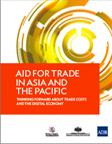 Aid for Trade in Asia and the Pacific: Thinking Forward About Trade Costs and the Digital EconomyAid for Trade (AfT) flows have increased each year since 2006 in Asia and the Pacific. While regional aggregate trade costs continue to fall, many subregions still struggle with trade costs that are substantially higher than the global average. This report highlights and explores how AfT contributed to these emerging trends in Asia and the Pacific and how to continue to address trade costs moving forward. Among the subregions, the Pacific (along with South Asia) has made the greatest improvements in the Logistics Performance Index from 2007-2014. Recent exporter surveys reveal a movement toward niche products and leveraging of e-commerce as a means to overcome cost and distance. Emerging digital technologies such as e-commerce further offers a new set of opportunities for economies in the region to grow through trade. Author: Asian Development Bank Year: 2015 Download Tags: Aid for Trade, Asia-Pacific, ICT, South Asia, Trade, Bangladesh, Bhutan, India, Sri Lanka, Agriculture, Energy, Transport  Maldives: Overcoming the Challenges of a Small Island State – Country Diagnostic StudyThe Maldives has propelled itself to middle-income status despite the geographic constraints and challenges of a small-island state. It has one of the lowest poverty rates in South Asia, although wide regional disparities in poverty rates and high-income inequality continue to be a concern. Growth – primarily driven by the tourism sector – has also been vulnerable to external shocks. As the Maldives moves toward a more sustainable and inclusive growth strategy, transport infrastructure is critical to help address the country’s connectivity issue and reduce the cost of doing business. This report identifies the critical constraints to inclusive growth in the Maldives and provides policy recommendations to sustain economic growth and hasten poverty reduction. Author: Asian Development Bank Year: 2015 Download Tags: Maldives, Small Island Developing States, Transport, Connectivity, Policy, Poverty Reduction, South Asia, Tourism 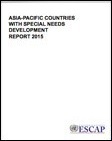 Asia-Pacific Countries with Special Needs Development Report 2015In the Asia-Pacific region, 36 out of the 58 economies are considered countries with special needs (CSN), which include least developed countries (LDC), landlocked developing countries, and small island developing States. This report highlights important areas that should be addressed as key priorities by CSNs such as economic diversification, external trade, South-South cooperation, and official development assistance including foreign direct investment. Bhutan and Nepal met the criteria for graduation from LDC status as of 2013. Other countries such as Bangladesh have a good chance of meeting the graduation criteria by 2018. Among the Small island developing States, Maldives is considered a success story in broadband internet connectivity. The results of this research show that Asia-Pacific CSNs must choose their paths to diversification carefully, depending on country circumstances. Author: United Nations Economic and Social Commission for Asia and the Pacific Year: 2015 Download Tags: Asia-Pacific, Least Developed Countries, Small Island Developing States, Bangladesh, Bhutan, Energy, FDI, Investment, Maldives, Nepal, Trade, Transport, UNESCAP Connecting South Asia and South East Asia This book analyzes how closer regional connectivity and economic integration between South Asia and Southeast Asia can benefit both subregions. It aims to build a broad case for increased connectivity between the two regions and identify specific projects that have high potential to fulfill this objective. This joint study focuses on both “hard” infrastructure and associated “soft” infrastructure, including tariffs and non-tariff barriers, trade and transport facilitation, energy trading, and infrastructure investment and financing. It further provides a canvas for considering strategic cross-border infrastructure investments and policy reforms. Author: Asian Development Bank Institute and Asian Development Bank Year: 2015 Download Tags: South Asia, Southeast Asia, Connectivity, Economic Corridor, Transport, Trade Facilitation, Bangladesh, India, Sri Lanka 25 Years on the Ground: ADB-Nepal Partnership for Inclusive DevelopmentThis publication commemorates 25 years of Nepal Resident Mission’s opening and provides an overview of the Asian Development Bank’s (ADB) operation in Nepal over the years. It highlights ADB-assisted projects and Nepal’s association with the South Asia Subregional Economic Cooperation (SASEC) initiative, to further enhance the nation’s role in regional and world trade. These projects aim for regional energy cooperation (SASEC Power System Expansion Project), as well as subregional cooperation and connectivity in the transport sector (SASEC Road Connectivity Project and Subregional Transport Facilitation Project). Author: Asian Development Bank Year: 2015 Download Tags: Nepal, Transport, Energy, ADB RCI 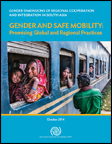 Gender Dimensions of Regional Cooperation in South Asia: Gender and Safe Mobility – Promising Global and Regional PracticesThis technical report analyzes global practices related to gender equality and safe migration, and their applicability to the context of South Asia. "Hard" aspects, such as physical infrastructure and equipment including border infrastructure, passenger holding facilities and surveillance cameras, and "soft" aspects, such as regional, bilateral and/or country-specific policies, programs, mechanisms and institutional linkages of safe mobility, are presented. The report also presents national policies and procedures that promote safe mobility. Given the lessons drawn from the reviewed policies and practices, it highlights the need for stronger evidence-based approaches in understanding the complex experience of women migrant workers, and identifies the need for more regular peer exchange through periodic regional dialogues of key stakeholder groups. Author: International Organization for Migration Year: 2014 Download Tags: Gender, Migration, South Asia, Bangladesh, Bhutan, India, Nepal, Transport, Trade 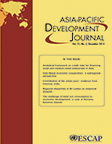 Asia-Pacific Development Journal Vol. 21, No. 2, December 2014The paper "Indo-Nepal Economic Cooperation: A Subregional Perspective" published in this issue of the Asia-Pacific Development Journal (APDJ) explores how subregional engagement among bordering regions can stimulate economic cooperation among countries in South Asia. It assesses the current status and potential of greater integration between India and Nepal, and develops a SWOT (strength-weakness-opportunity-threat) analysis reflecting on the need for a subregional approach to promotion of regional cooperation. APDJ, published twice a year by the Macroeconomic Policy and Development Division of UNESCAP, provides a platform for exchange of knowledge, experience, ideas, information and data on all aspects of economic and social development issues and concerns facing the region. Author: United Nations Economic and Social Commission for Asia and the Pacific Year: 2014 Download Tags: Economic Integration, India, Nepal, Trade, Bangladesh, Sri Lanka, Transport, Trade, Tourism Developing Economic Corridors in South Asia This book describes key conditions for transforming transport corridors into economic corridors and establishes the rationale for developing economic corridors, and the related benefits from production value chains along those corridors. It further emphasizes the significant potential of economic corridors in South Asia, particularly those being developed under the South Asia Subregional Economic Cooperation Program. The chapters highlight the impact of trade barriers on bilateral trade and present case studies on trade facilitation in South Asia. Countries in the subregion would benefit by working closely to exploit the full economic potential of economic corridors. Author: Asian Development Bank Year: 2014 Download Tags: Economic Corridor, South Asia, Trade Facilitation, Bangladesh, India, Sri Lanka, ADB, SASEC, Bilateral Trade, Transport World Tariff Profiles 2014This statistical yearbook devoted to market access for goods contains a comprehensive compilation of tariff parameters for each of the 160 World Trade Organization members, plus a number of other countries and customs territories where data is available. Each country profile presents information on tariffs
imposed by each economy on its imports, including an analysis of market access conditions in its major export markets. Statistics for all countries allow easy comparisons between countries and sectors, as well as between bound and applied tariffs. Author: World Trade Organization, International Trade Centre, and United Nations Conference on Trade and Development Year: 2014 Download Tags: WTO, Customs, Tariff, Bangladesh, India, Maldives, Nepal, Sri Lanka, Transport, Tariffs, Trade A World Trade Organization for the 21st Century: The Asian PerspectiveThis Asian Development Bank Institute book examines key changes in the world trading system and explores policy implications for Asia. Through a compilation of essays from prominent international and Asian trade experts, this book presents interaction of market forces and trade regulation. Lessons from the Asian experience offer new approaches and economic policies to sustain growth, presenting the World Trade Organization as a forum to improve regional and global trade governance in the 21st century. Author: Richard E. Baldwin, Masahiro Kawai, Ganeshan Wignaraja (Eds.) Year: 2014 Download Tags: Trade, Trade Policy, WTO, Bangladesh, Bhutan, Energy, India, Maldives, Nepal, Sri Lanka, Transport Seaborne Trade between South Asia and Southeast Asia This Asian Development Bank Institute paper examines trade and the main ports around the Bay of Bengal to identify projects that will enable trade and contribute to improved maritime infrastructure. It also reviews the nature of trade and trade patterns, particularly through the Indian East Coast Corridor study. The paper develops further strategic options for seaport adjustment around the Bay of Bengal to support trade evolution, policy assessment, and other constraints. Author: David Wignall, Mark Wignall Year: 2014 Download Tags: Transport, Trade, Ports, ADB, India, Economic Corridor, Bangladesh, Energy, Myanmar, Sri Lanka Regional Transit Agreement in South Asia: An Empirical InvestigationThis discussion paper published by the South Asia Watch on Trade, Economics and Environment assesses the potential gains of a sub-regional transit arrangement and the removal of other border-trade barriers, particularly the eastern South Asia sub-region (Bangladesh, Bhutan, India and Nepal). It also discusses the link between transit and trade flows, provides profiles of intra-regional transit trade and current transit arrangements in South Asia, and identifies efficient regional transit corridors using linear programming or the Data Envelopment Analysis model. Author: Prabir De and Arvind Kumar Year: 2014 Download Tags: South Asia, Trade, Transport, Economics, Economic Corridor, SASEC, SAARC, UNESCAP, Customs, Harmonisation, Bangladesh, Bhutan, India, Nepal, Maldives, Sri Lanka UNCTAD Transport Newsletter: Fourth Quarter 2014This United Nations Conference on Trade and Development (UNCTAD) newsletter focuses on the development dimension and benefits of the World Trade Organization Trade Facilitation Agreement. It includes sections on the national trade facilitation committees, project proposal for the implementation of trade facilitation measures contained in the agreement, and improvement in implementation of sanitary and phytosanitary measures to facilitate trade. It also includes UNCTAD’s contribution to trade facilitation in Landlocked Developing Countries and Small Island Developing States. Author: United Nations Conference on Trade and Development Year: 2014 Download Tags: Trade Facilitation, WTO, UNCTAD, Transport, Development, Sanitary and Phytosanitary Measures, Energy, India Statistical Yearbook for Asia and the Pacific 2014The Statistical Yearbook contains comparative statistics and facts about the 58 regional members and associate members of the Economic and Social Commission for Asia and the Pacific. It includes brief analyses of 32 key development features such as energy supply and use, international trade, and transport, among others. In energy, the region’s production structure is highly resource-intensive, although per capita energy use is low. The section on international trade recommends focusing on raising domestic value-added rather than increasing gross exports in Asia and the Pacific. Finally, investment in environmentally sustainable transport is encouraged. Author: United Nations Economic and Social Commission for Asia and the Pacific Year: 2014 Download Tags: Asia-Pacific, Energy, Trade, Transport, Bangladesh, Bhutan, India, Maldives, Nepal, Sri Lanka The Competitiveness of Global Port-CitiesThis book explores the inter-linkages between ports and urban development. It provides an internationally comparative benchmark study of port cities. Case-studies of selected port-cities provide detailed analysis of port performance, port impacts, policies, and governance. The least time-efficient ports are located in Africa and South Asia. Mumbai, India, for example – one of the selected port-city profiles – lacks port infrastructure and suffers from heavy regulation. Author: Organization for Economic Co-operation and Development Year: 2014 Download Tags: Transport, Ports, India 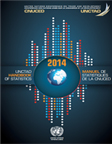 UNCTAD Handbook of Statistics 2014The UNCTAD Handbook of Statistics is a collection of statistics and indicators relevant to the analysis of international trade, investment and development. The 2014 edition shows the increasing convergence of trade balance between developing and developed economies continues. The report also includes regional trade data from South Asia that shows average annual growth rate of international trade improved from a previous deficit of -7.1% in 2012 to -0.1% in 2013. However, trade balance ran a deficit of -26.51% compared to the previous year's -25.94%. Trade indicators also report intra-trade in South Asian Association for Regional Cooperation region rose modestly from US$ 20,219 million to US$ 23,181 million between 2012 to 2013 and maintains intra-regional trade percentage at 5.8%. Author: United Nations Conference on Trade and Development Year: 2014 Download Tags: UNCTAD, Regional Trade, Development, Bangladesh, Bhutan, India, Maldives, Nepal, Sri Lanka, Transport  The Connectivity AgendaThis article appeared in the special issue of My Republica published on the occasion of the 18th SAARC Summit. Mr. Ronald Antonio Q. Butiong, Unit head of the South Asia Subregional Economic Cooperation (SASEC) Regional Cooperation and Operations Coordination Division of the Asian Development Bank (ADB), traces the blueprints of SASEC projects to the South Asian Association for Regional Cooperation (SAARC) Regional Multimodal Transport Study (2006) and SAARC Regional Energy Trade Study (2010); two studies supported by ADB and endorsed by SAARC member states. Highlighting the SASEC focus to promote economic cooperation in the subregion by developing cross-border connectivity and facilitating intra-regional trade in South Asia through its priority sectors—energy, transport, and trade facilitation—Mr. Butiong explains how ADB is providing assistance to sections of Bangladesh, Bhutan, India, and Nepal along SAARC corridors through SASEC. Featuring a brief discussion of key SASEC projects and technical assistance (since 2001, 33 projects implemented, worth over US$6 billion) alongside institution and capacity-building support, the article shows how the SASEC connectivity agenda is part of achieving SAARC development objectives. Author: Ronald Antonio Q. Butiong Year: 2014 Download Tags: SAARC, Energy, Transport, Trade Facilitation Bridging Transport, ICT, and Energy Infrastructure Gaps for Seamless Regional ConnectivityThis publication is a contribution by the United Nations Economic and Social Commission for Asia and the Pacific to deliberations at the Second United Nations Conference on Landlocked Developing Countries (LLDCs) in Vienna, Austria, 3-5 November 2014. It shows regional connectivity as an unfinished agenda and bridging infrastructure gaps as a complex challenge for LLDCs. While physical infrastructure is a priority, this report argues that deeper regional integration – through regionally cohesive and terrestrial networks – is key to effectively linking Asian LLDCs to the region’s infrastructure networks. Author: United Nations Economic and Social Commission for Asia and the Pacific Year: 2014 Download Tags: Transport, ICT, Energy, UNESCAP, SASEC, Connectivity, Infrastructure, Bangladesh, India, Nepal, Sri Lanka, Trade, Trade Facilitation, Policy, Trade Policy Review of Maritime Transport 2014The Review of Maritime Transport is an annual UNCTAD flagship publication since 1968. It provides analysis of structural and cyclical changes affecting seaborne trade, ports and shipping, freight markets, and transport and regulatory frameworks. It further presents statistics, data, and insights on ownership of the world fleet, with South Asia dominating the market for ship recycling. This year’s special chapter focuses on the challenges faced by the world’s Small Island Developing States (SIDS) and reviews shipping-related challenges resulting from SIDS size, remoteness, and exposure to natural hazards, including impacts of climate change. Author: United Nations Conference on Trade and Development Year: 2014 Download Tags: Transport, Ports, Small Island Developing States, UNCTAD, Trade, South Asia, Bangladesh, India, Maldives, Sri Lanka Asian Economic Integration Monitor: November 2014This AEIM review of recent economic performance highlights the need for Asia to rebalance its sources of growth toward domestic and regional demand. It also shows a resilient Asia with rising GDP growth in South Asia. This issue includes a Special Chapter: Regional Financial Integration and Crisis in Asia and Europe – A Comparative Analysis. It presents Asia’s future path of integration as different from that in Europe. Asia will continue to strengthen efforts to harmonize rules and regulations in the financial sector and further unilateral trade and investment, while Europe is more likely to strengthen regional institutions to ensure recovery and better the monetary union. Author: Asian Development Bank Year: 2014 Download Tags: Asia-Pacific, Economic Integration, Europe, ASEAN, Bangladesh, Bhutan, India, Maldives, Nepal, Regional Integration, Sri Lanka, Trade Facilitation, Transport 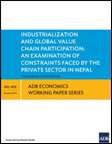 Industrialization and Global Value Chain Participation: An Examination of Constraints Faced by the Private Sector in NepalThis paper examines the constraints behind and beyond Nepal's borders that hinder its full participation in global value chains (GVC). Basing the analysis on recent and relevant publications, key economic data, and interviews with policymakers and stakeholders, the authors explain how weak and uncertain industrial policy has led to de-industrialization. They also looked at the effects of inadequate infrastructure, energy shortage, and inefficient transit. Failures in coordination, shallow regional integration and non-tariff barriers also bar further growth of Nepal's industrial development and GVC participation. The authors recommend necessary domestic reforms for behind-the-border constraints, and subregional partnerships—facilitated through the South Asia Subregional Economic Cooperation program—for beyond-the-border challenges. Author: Yurendra Basnett and Posh Raj Pandey Year: 2014 Download Tags: Infrastructure, Private Sector, Nepal, Global Value Chains, Industrialization, Infrastructure, Energy, Transport, Regional Integration, SASEC SASEC Website BrochureThis promotional brochure for the SASEC website features the web portal as a one-stop shop for information on SASEC activities, events, projects, and knowledge materials. The SASEC website seeks to build a dynamic discussion platform and repository of data on regional cooperation. Author: Asian Development Bank Year: 2014 Download Tags: SASEC, Knowledge Product, ICT, ADB, Bangladesh, Bhutan, India, Maldives, Nepal, South Asia, Transport, Trade Facilitation, Energy SASEC BrochureThis promotional brochure is a concise introduction to the South Asia Subregional Economic Cooperation (SASEC) Program, highlighting the main areas of regional cooperation and activity. It includes facts and figures about SASEC projects in transport, trade facilitation, energy, and ICT. Author: Asian Development Bank Year: 2014 Download Tags: SASEC, Trade Facilitation, Regional Cooperation, ICT, ADB, Bangladesh, Bhutan, India, Nepal, Maldives, Sri Lanka, Energy, Transport, Connectivity, Myanmar 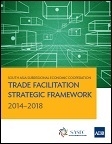 SASEC Trade Facilitation Strategic Framework 2014-2018The South Asia Subregional Economic Cooperation (SASEC) Trade Facilitation Strategic Framework 2014-2018 builds on the momentum of member countries over recent years in forging ahead with many significant improvements to facilitate, and ultimately increase, trade in the subregion and with the rest of the world. It supports the mission of the SASEC Transport and Trade Facilitation Strategy “to promote the prosperity of the subregion by facilitating the efficient movement of trade across the borders”, and focuses on five priority areas: customs modernization and harmonization; standards and conformity assessment strengthening; cross-border facilities improvement; through-transport facilitation; and institution and capacity building. Author: Asian Development Bank Year: 2014 Download Tags: SASEC, Trade Facilitation, Regional Cooperation, Transport, Trade, Customs, Standards, Harmonisation, Regional Integration, ADB, Bangladesh, Bhutan, India, Maldives, Nepal, Sri Lanka, South Asia, ADB RCI Port Management Series Volume 1: Port Management Case StudiesThis publication presents summaries of the best three dissertations from the past cycle of the English-speaking network of the Train-for-Trade Port Training Program (2011-2013). This United Nations Conference on Trade and Development Train-For-Trade Port Training Programme supports port communities in developing countries achieve efficient and competitive port management. The findings of the Maldives study reveal the possibility of reducing port maintenance by 15% of total operating costs through adherence to a maintenance schedule, standardizing equipment in procurement policy, updating maintenance requirements and available equipment, and recording maintenance expenditure. Author: United Nations Conference on Trade and Development Year: 2014 Download Tags: Maldives, Transport, Ports 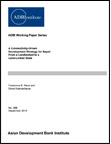 A Connectivity-Driven Development Strategy for Nepal: From a Landlocked to a Land-Linked StateTransforming Nepal from a landlocked into a land-linked state, the authors argue, could be key to unlocking the country's much-awaited growth. With its strategic location between India and the People's Republic of China, a connectivity-driven development strategy could energize Nepal's lackluster post-conflict economic performance. Further, Nepal implements a multi-track approach to promoting regional cooperation and integration in connectivity with its neighbors, reinforced through participation in South Asian Association for Regional Cooperation, Bay of Bengal Initiative for Multi-Sectoral Technical and Economic Cooperation, and South Asia Subregional Economic Cooperation. By identifying ten priority projects that could further boost Nepal's connectivity, the paper also discusses how strengthening Nepal's transport, energy, and trade links could benefit the region. However, the authors also warn against “internal threats” to Nepal's development—corruption and the country's difficult political situation. Author: Pradumna B. Rana and Binod Karmacharya Year: 2014 Download Tags: Nepal, Economic Corridor, Regional Trade, Connectivity, Development, Economic Growth, SASEC, India, Regional Cooperation, Regional Integration, SAARC, BIMSTEC, Transport, Energy, Trade Economic and Social Survey of Asia and the Pacific 2014This 2014 edition of UNESCAP's flagship publication emphasizes the importance of furthering regional connectivity in Asia-Pacific—a region which, despite significant reductions in poverty levels, is now witnessing rising income inequality, both within and between countries. It calls for driving the region's growth by exploiting the interdependence and synergies of five elements: trade and transport connectivity, ICT networks, energy connectivity, people-to-people networks, and promotion of knowledge-based economies, and advocates approaching connectivity as a regional public good. Author: UNESCAP Year: 2014 Download Tags: Economic Integration, Regional Cooperation, Poverty Reduction, Asia-Pacific, Connectivity, Energy, ICT, Bangladesh, Bhutan, India, Maldives, Sri Lanka, Trade, Transport, UNESCAP 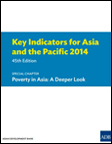 Key Indicators for Asia and the Pacific 2014This year's edition presents an in-depth inquiry on poverty in Asia, tackling whether the $1.25/day extreme poverty standard still accurately depicts minimum living standard of the poor in Asia and the Pacific. Using this broad measure, the poverty rate is projected to fall to 24.5% for South Asia by 2030, if recent economic growth trends continue. However, considering the current national poverty line average among today's less developed economies in the region, an Asia-specific extreme poverty line is more accurately estimated at $1.51/day, increasing Asia’s poverty rate in 2010 by 9.8%, and ��of a large economy like India by 15%. Hence, despite huge gains made, reducing poverty remains a pressing challenge in Asia and the Pacific. This book proposes several measures to counteract worsening poverty, including �close �regional cooperation which can reduce a country’s vulnerability, and urgent policy actions that promote economic growth and prioritize climate change adaptation and mitigation. Author: Asian Development Bank Year: 2014 Download Tags: Poverty Reduction, Disaster Risk, Regional Cooperation, Asia-Pacific, Bangladesh, Bhutan, Economics, Energy, India, Maldives, Milennium Development Goals, Nepal, Sri Lanka, Sustainability, Transport 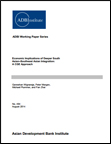 Economic Implications of Deeper South Asian–Southeast Asian Integration: A CGE ApproachHigh tariff and non-tariff barriers, and costly transport links and inefficient trade facilitation measures continue to hamper the growth of trade between South Asia and Southeast Asia. This paper explores whether potential gains from improved connectivity—via Myanmar as inter-regional bridge—justify a high level of investment. Using an advanced computable general equilibrium (CGE) model, reduction of inter-regional tariffs, decreasing of non-tariff barriers by 50%, and cutting down of trade costs between South Asia and Southeast Asia by 15% yields a prediction of 8.9% rise in welfare in South Asia and Southeast Asia, and an increase of 6.4% in gross domestic product by 2030. Author: Ganeshan Wignaraja, Peter Morgan, Michael Plummer, and Fan Zhai Year: 2014 Download Tags: Transport, Trade Facilitation, South Asia, Southeast Asia, Regional Integration, Tariff, Trade, Connectivity, Investment, Myanmar, GDP 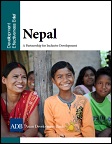 Nepal: Development Effectiveness Brief 2014Nepal has the potential to achieve more inclusive growth and can largely benefit from regional cooperation and integration with its developing neighbors. It is also benefiting from South Asia Subregional Economic Cooperation, a flagship ADB-supported program that promotes economic cooperation and integration in areas of trade facilitation (custom modernization and transport connectivity), power development, trade, and tourism development. This brief further explores ADB’s contribution to inclusive development and poverty reduction, energy, and transport. Exporting energy when surplus is available is one way of meeting seasonal demand by subregional cooperation and power trade. Transport infrastructure is also another key ingredient to equitable, inclusive growth that can address challenges such as lack of market access, inadequate roads, and poor connectivity. Author: Asian Development Bank Year: 2014 Download Tags: Nepal, Regional Cooperation, South Asia, ADB, Connectivity, Energy, Roads, SASEC, Trade, Transport Future of Factory AsiaThis volume, co-published by the Asian Development Bank and the Korea Economic Research Institute, reflects one of the broad thematic sessions of the Seoul conference, Beyond Factory Asia. It assesses the challenges and sustainability of the Factory Asia model – supplying from the East and consuming in the West – and provides suggestions and strategies on effective management of these concerns. The volume further analyzes obstacles in the success of Factory Asia, its speed in expanding its own domestic and regional markets, and its progress in upgrading competitiveness in the manufacturing sector. The new Factory Asia must nurture new sources of growth in the region and focus on regional economic integration. Author: Choi Byung-il and Changyong Rhee (eds.) Year: 2014 Download Tags: Economic Integration, Asia-Pacific, Trade Policy, ADB, Asia, Manufacturing, Regional Integration, Bangladesh, Energy, Sri Lanka, Transport 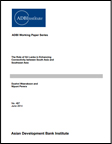 The Role of Sri Lanka in Enhancing Connectivity between South Asia and Southeast Asia As Sri Lanka rebuilds at the end of a 30-year conflict, its progress in improving physical infrastructure—including the Colombo port expansion and other programs for new expressways and road connectivity—has been significant. Yet, the country has seen a sharp decline in its overall exports-to-gross domestic product ratio. How Sri Lanka can benefit from greater connectivity with its neighbors in South Asia and Southeast Asia is discussed in this paper. Trade policies geared towards enhancing regional integration efforts could boost Sri Lanka's economy. Additionally, to lessen the challenges of financing and sustaining implementation of planned infrastructure development efforts, Sri Lanka could also implement a more stringent institutional and regulatory environment encouraging more private sector participation. Author: Dushni Weerakoon and Nipuni Perera Year: 2014 Download Tags: Trade Policy, Trade Facilitation, Sri Lanka, Connectivity, South Asia, Southeast Asia, ADB, Transport, Regional Integration 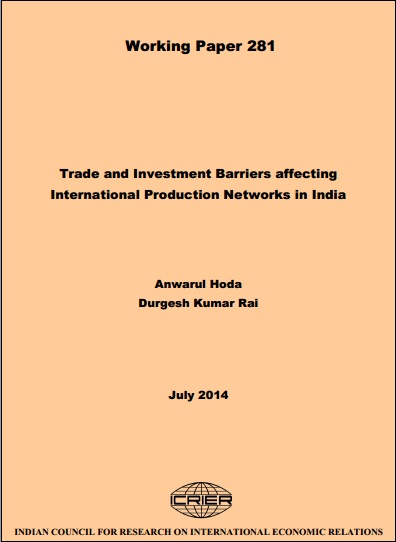 Trade and Investment Barriers Affecting International Production Networks in IndiaRecognizing India as an outlier in development of international production networks with the lowest participation among Asian countries, this study investigates the reason for India’s lackluster participation in production-sharing networks. Using desk work, field surveys, and interviews, an analysis is adopted with three comparator countries in the region that have been successful in production-sharing arrangements as well as industrial growth – China, Malaysia, and Thailand. It further describes foreign direct investment inflows into India, analyzes behind-the-border investment environment, and provides recommendations to improve investment climate and hasten the pace of manufacturing development in India. Author: Anwarul Hoda and Durgesh Kumar Rai Year: 2014 Download Tags: India, Trade, Production Networks, Investment, Thailand, Manufacturing, Customs, Economic Corridor, Energy, Trade Facilitation, Transport 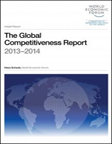 Global Competitiveness Report 2013-2014The World Economic Forum's Global Competitiveness Report offers a platform for dialogue among key stakeholders in government, business, and civil society on improving the living standards of the world’s citizens through insights on institutions, policies, and factors that drive or hinder growth and national competitiveness. Using the Global Competitiveness Index (GCI), twelve pillars are considered, including infrastructure, which, among factor-driven economies of Bangladesh, India, and Nepal, impacts the location of economic activity, reduces distance between regions, and enables production and faster flow of goods. Market size—essential for countries with small domestic markets—is another key index measured. The 2013-2014 report also includes an assessment of newly-covered Bhutan, and an analysis for the drop in India's GCI ranking. Author: Klaus Schwab Year: 2014 Download Tags: Economics, Poverty Reduction, Infrastructure, Bangladesh, Bhutan, Energy, India, Nepal, Sri Lanka, Transport Asian Development Outlook 2014: Fiscal Policy for Inclusive GrowthThe Asian Development Outlook, ADB’s flagship economic publication provides comprehensive macroeconomic analysis in Asia including growth projections by country and region. The Asian Development Outlook 2014 forecasts that developing Asia will grow 6.2% in 2014 and 6.4% in 2015. South Asia remains one of the slowest growing subregions—although growth is forecast to improve by 5.3% in 2014 and 5.8% in 2015. Author: Asian Development Bank Year: 2014 Download Tags: ADB, Bangladesh, Bhutan, Economic Corridor, Energy, India, Maldives, Nepal, Sri Lanka, Transport 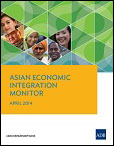 Asian Economic Integration Monitor - April 2014The Asian Economic Integration Monitor, a semiannual review of regional economic cooperation and integration in Asia covers regional economic updates, intraregional trade, financial integration and investment, and the importance of disaster risk financing instruments. The Theme Chapter: Insuring Against Asia’s Natural Catastrophes discusses market solutions and the role of government in developing disaster risk financing and strengthening financial resilience. The economic update section encourages strengthening regional cooperation in surveillance and financial safety nets, and deepening economic links. Inter-subregional trade between each subregion and the rest of Asia is rising, except in South Asia, while financial integration continues to deepen across the region. Author: Asian Development Bank Year: 2014 Download Tags: Regional Cooperation, Regional Integration, South Asia, Disaster Risk, Climate, Bangladesh, Bhutan, India, Maldives, Nepal, Sri Lanka, Transport Lose to Gain: Is Involuntary Resettlement a Development Opportunity?This book examines how displaced persons recover from physical and economic displacement in the South Asian context using resettlement case studies from India, Nepal, and Sri Lanka. Despite improvement in national policies and willingness to enforce good practices, the level of involuntary resettlement good practices in South Asia varies widely. There is need for greater commitment, legal reforms, and adequate resources to ensure that involuntary resettlement becomes a development opportunity for all project-affected persons. Author: Perera, Jayantha (ed.) Year: 2014 Download Tags: India, Nepal, South Asia, Resettlement, Bangladesh, Energy, Renewables, Sri Lanka, Transport Reducing Poverty by Closing South Asia's Infrastructure GapThis report takes a critical look at inter-and intra-regional infrastructure of South Asia and explores inequality of access across space and time. It gives an approximate total cost of regional infrastructure needs and investment trends in the South Asia region, along with a proposed framework on ranking of infrastructure needs. The report also examines better usage of existing resources and policy options to help the poorest gain better access to infrastructure.
Finally, it recognizes the enormity of infrastructure deficiencies in South Asia and acknowledges that a good mix of infrastructure investment and supportive reform implementation will enable the region to close the infrastructure gap. Author: Luis Andrés, Dan Biller, and Matías Herrera Dappe Year: 2013 Download Tags: Transport, South Asia, Infrastructure, Energy, Roads, Railway, Water Supply, Bangladesh, Bhutan, Nepal, India, Sri Lanka, Maldives Connecting South Asia and Southeast Asia: Interim ReportThis joint ADB-ADBI study focuses on how improved physical connectivity (infrastructure) and associated institutional connectivity (software) can enhance more effective economic integration between the two subregions. The report reviews economic ties, identifies issues and constraints, and explores better connectivity and closer economic integration. It also examines major developments in South Asia-Southeast Asia trade and investment, economic cooperation, role of economic corridors, and regional cooperation initiatives. Author: ADB and ADBI Year: 2013 Download Tags: Infrastructure, Economic Integration, Regional Cooperation, Trade, Transport, Trade Facilitation, Economic Corridor, Energy ADB Regional Cooperation Operations Business Plan (RCOBP) 2014-2016 for South AsiaADB's third Regional Cooperation Operations Business Plan (RCOBP) 2014-2016 for South Asia under its South Asia Regional Cooperation Strategy (RCS) 2011-2015 details a cumulative indicative lending program of $3.3 billion and maintains focus on improved regional connectivity, increased cross-border trade, and strengthened regional economic cooperation. Author: Asian Development Bank Year: 2013 Download Tags: Regional Cooperation, Regional Integration, Bangladesh, Bhutan, India, Maldives, Nepal, Sri Lanka, Trade Facilitation, Transport, Energy, SAARC Review of Developments in Transport in Asia and the Pacific 2013While transport has been an essential element in the rapid growth and economic development of Asia and the Pacific, the sector is now at a crossroads more than ever before. Rocketing demand for transport services is putting extreme pressure on existing infrastructure at a time when public budgets are constrained and awareness about the negative externalities of transport activities is growing. Author: United Nations Year: 2013 Download Tags: Transport, Infrastructure Aid for Trade: An Investment Benefit Road Map for South AsiaAid for Trade (AfT) came to prominence just over a decade ago at the launch of the
World Trade Organization's Doha Round. With its focus on helping least developed
countries and economies escape the poverty trap, it aims to strengthen their
capabilities to meet market demand and to reduce supply-side constraints such as a lack of
trade infrastructure. Author: Asian Development Bank Year: 2013 Download Tags: Trade Policy, Poverty Reduction, Infrastructure, India, Bangladesh, Bhutan, Maldives, Sri Lanka, Nepal, Trade Facilitation, Transport, Global Value Chains, Exports Energy Outlook for Asia and the Pacific: October 2013The Energy Outlook for Asia and the Pacific aims to support ADB energy sector operations
by providing stakeholders with an energy outlook for the region up to the year 2035.
It attempts to identify policy, social, infrastructure, and technology issues that must be
addressed to meet future energy need of ADB members in Asia and the Pacific. Author: Asian Development Bank Year: 2013 Download Tags: Energy, Infrastructure, Renewables, Hydropower, Transport, Bangladesh, Bhutan, India, Nepal, Maldives, Sri Lanka Sector Roadmaps with Result FrameworksSector roadmaps with result frameworks for transport, energy, and trade facilitation. Author: Asian Development Bank Year: 2011 Download Tags: Trade Facilitation, Energy, Transport, Bangladesh, Bhutan, India, Maldives, Nepal, Sri Lanka 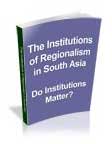 The Institutions of Regionalism in South Asia - Do Institutions Matter?This paper assesses the contribution of key institutions of regional cooperation and integration (RCI) in South Asia, and suggests ways in which the Asian Development Bank and other development partners can strengthen their support. It attempts to enhance understanding on the interplay between politics and RCI, including how good bilateral political relations or improvements have advanced RCI. With the overall political environment growing increasingly open to RCI, the paper suggests the time has come for the South Asian Association for Regional Cooperation (SAARC) to consider strengthening the capacity of the SAARC Secretariat to meet the growing challenges and work load of managing the anticipated increase in RCI. Author: Prabhu Ghate Year: 2011 Download Tags: Regional Cooperation, Regional Integration, Development, SAARC, Trade, Services, Trade Facilitation, Energy, Free Trade Agreements, SAFTA, Bangladesh, Bhutan, India, Maldives, Nepal, Sri Lanka, Transport The Provision of Regional Public Goods in South AsiaThis report reviews the provision of high priority regional public goods (RPGs) selected
for the South Asia subregion, and proposes areas of cooperation for improving the provisioning of RPGs in South Asia. It highlights the issues in cross border management of infrastructure projects and best practices in the provisioning of RPGs relevant for South Asia, evaluates ADB’s contributions to providing RPGs in the subregion, and concludes with recommendations on ADB’s South Asia Regional Department’s role in the provision of RPGs in the subregion. Author: Khaja Moinuddin Year: 2010 Download Tags: Energy, Agriculture, Disaster Risk, Governance, Poverty Reduction, Bangladesh, Bhutan, India, Maldives, Nepal, Sri Lanka, Trade Facilitation, Transport Binding Contraints to Regional Cooperation and Integration in South AsiaThis paper examines the benefits of regional cooperation and integration, focusing on the cost of neglecting to address the binding constraints to regional cooperation and integration. Component papers in this volume analyze the current state of play, and identifies the binding constraints to achieving more efficient transport corridors, regional energy trade and trade facilitation in the region. Author: Gilberto M. Llanto Year: 2010 Download Tags: Regional Cooperation, Economic Integration, Trade Facilitation, Energy, Bangladesh, Bhutan, India, Maldives, Nepal, Sri Lanka, Transport Infrastructure for a Seamless AsiaThe study reviews regional infrastructure being enhanced through regional cooperation in Asia and examines major issues and challenges. It suggests a framework for pan-Asian infrastructure cooperation, anchored on a long-term vision of creating a seamless Asia that will not only enhance the region's competitiveness and extend its global reach, but also help reduce poverty and promote greater environmental sustainability. Author: Asian Development Bank / Asian Development Bank Institute Year: 2009 Download Tags: Regional Cooperation, Regional Integration, Transport, Trade Facilitation, Connectivity, India, Bangladesh, Bhutan, Nepal, Maldives, Sri Lanka, Asian Highway, Trans-Asian Railway Network, Energy, Myanmar Pan-Asian IntegrationIn today's globalized world where the economic fates of nations are inevitably linked, weathering the present economic storm for Asia will increasingly depend on harnessing regional dynamics particularly on the trade front. Pan-Asian Integration: Linking East and South Asia is a rich volume of perspectives from leading thematic experts on regional patterns of trade and investment, trade-related infrastructure, trade facilitation, among others. Author: Asian Development Bank Year: 2009 Download Tags: Regional Cooperation, Regional Integration, Trade Policy, Transport, Trade Facilitation, Economics, India, Free Trade Agreements Quantification of Benefits from Economic Cooperation in South AsiaThe study examines the implication of the South Asian Free Trade Agreement (SAFTA) on South Asian countries and on the region as a whole, employing both a quantitative and qualitative assessment on the outcomes of SAFTA. The research aims to provide support in the formulation of concrete policy measures for trade to ensure greater gains for the region, while at the same time mitigating potential negative impacts. Economic and social assessments through analytical tools and rational causal chain analysis further enrich the study. Author: Asian Development Bank / United Nations Conference on Trade and Development Year: 2008 Download Tags: Economic Corridor, Regional Cooperation, Regional Integration, SAFTA, Free Trade Agreements, Trade Facilitation, Transport, Services, SAARC, Bangladesh, Bhutan, India, Maldives, Nepal, Sri Lanka |




